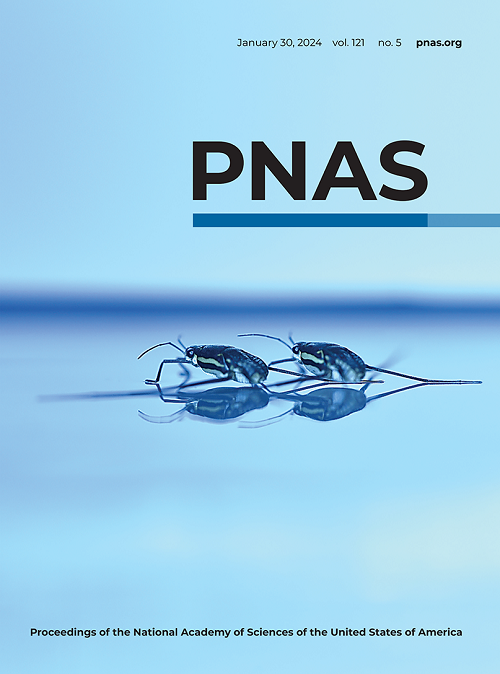An enzyme-based approach for highly efficient self-replication of DNA origami dimers.
IF 9.4
1区 综合性期刊
Q1 MULTIDISCIPLINARY SCIENCES
Proceedings of the National Academy of Sciences of the United States of America
Pub Date : 2025-07-17
DOI:10.1073/pnas.2500160122
引用次数: 0
Abstract
Self-replication and exponential growth are essential to all living things, the driving force for Darwinian evolution, and potentially useful in nanotechnology for large-scale production of nanoscopic materials. An artificial (nonliving) self-replication system has been shown to exhibit exponential growth and selection using DNA monomer origami tiles templated on a dimer seed. That system purposefully avoided the use of enzymes to get a hint of how self-replication might have evolved in a prebiotic world by using CNVK and UV light to crosslink complementary DNA single strands. For further investigations into competition and extinction and for potential applications involving biocompatibility, we wanted to investigate enzymatic ligation to replace the chemical photo crosslinking step. Here, we present a system which uses thermotolerant T4 DNA ligase and no UV. This system has several additional advantages including a much faster cycling time, yielding 2,000,000 amplifications in 12 h. We also introduce competition to study the possibility of Darwinian-like evolution. Two pairs of DNA origami tiles compete for the same connection strands and show different growth rates under different connection strand concentrations. This system has the potential to combine with other enzymes, such as RNA polymerase to support feedback, allowing us to fine-tune replication dynamics and achieve sophisticated, life-like behaviors. The highly efficient self-replication and exponential growth of DNA origami dimers demonstrated in this work not only enhances our understanding of Darwinian evolution in nature but also opens the door to applications ranging from synthetic biology to smart materials.基于酶的DNA折纸二聚体高效自我复制方法。
自我复制和指数增长对所有生物来说都是必不可少的,是达尔文进化论的驱动力,在纳米技术大规模生产纳米级材料方面也有潜在的用处。人工(无生命)自我复制系统已显示出指数增长和选择使用DNA单体折纸瓷砖模板上的二聚体种子。该系统故意避免使用酶,通过使用CNVK和紫外线来交联互补的DNA单链,从而获得在益生元世界中自我复制如何进化的线索。为了进一步研究竞争和灭绝以及涉及生物相容性的潜在应用,我们想研究酶连接来取代化学光交联步骤。在此,我们提出了一个使用耐高温T4 DNA连接酶和无紫外线的系统。该系统还有几个额外的优点,包括更快的循环时间,在12小时内产生200万次扩增。我们还引入竞争来研究达尔文式进化的可能性。两对DNA折纸砖竞争同一条连接链,在不同连接链浓度下表现出不同的生长速率。这个系统有可能与其他酶结合,如RNA聚合酶来支持反馈,使我们能够微调复制动力学,实现复杂的、类似生命的行为。在这项工作中展示的DNA折纸二聚体的高效自我复制和指数增长不仅增强了我们对自然界达尔文进化的理解,而且为从合成生物学到智能材料的应用打开了大门。
本文章由计算机程序翻译,如有差异,请以英文原文为准。
求助全文
约1分钟内获得全文
求助全文
来源期刊
CiteScore
19.00
自引率
0.90%
发文量
3575
审稿时长
2.5 months
期刊介绍:
The Proceedings of the National Academy of Sciences (PNAS), a peer-reviewed journal of the National Academy of Sciences (NAS), serves as an authoritative source for high-impact, original research across the biological, physical, and social sciences. With a global scope, the journal welcomes submissions from researchers worldwide, making it an inclusive platform for advancing scientific knowledge.

 求助内容:
求助内容: 应助结果提醒方式:
应助结果提醒方式:


